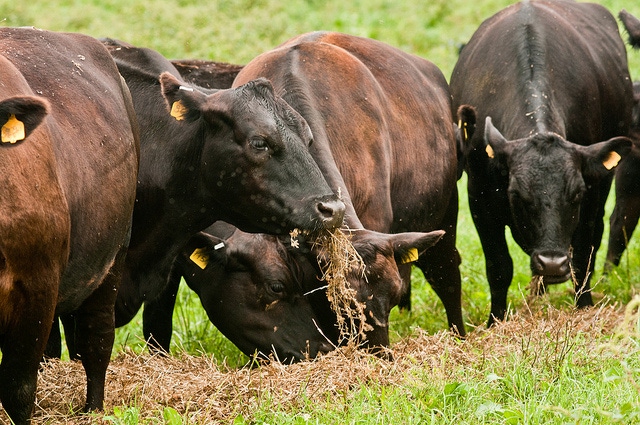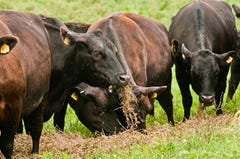June 8, 2015

As the ongoing drought in California continues to plague producers and consumers alike, a trendy headline that media types have been chasing lately points fingers at agriculture, claiming that the nation’s food producers use too much water. However, this claim doesn’t have much meat on its bones.
In case you’ve missed BEEF’s coverage on this topic, check out:
1. 3 articles that highlight the media’s coverage of agriculture’s water usage
2. Water issues intensify; will the livestock industry be left in the dust?
3. Water worries: Is management or supply the challenge?
4. Can you justify your ranch’s water use? Soon you might have to.
5. Cattle aren’t the water guzzlers they’re made out to be
When the topic of agriculture’s water use gets brought up in the media, I like to have some talking points in my tool belt to dispel some of the myths and correct the misinformation.
Here are three talking points I use that you can add to your arsenal:

Photo Credit: USDA
1. Taking into account all water from farm to the consumers’ fork—which would include water for cattle to drink as well as water used in irrigation of pastureland that cattle may graze on and growing crops that cattle may eat; water used for harvesting and processing beef; water used for refrigeration units at the grocery store or at a restaurant to keep food cold; water used for transportation as well as in cooking; and even the water taken into account for food waste—it takes 617 gallons of water per 1 pound of boneless beef consumed. Keep in mind that water used in agriculture is not “used up.” The water cycle we all studied in elementary school still works. Water percolates into aquifers, it runs down streams into lakes and oceans, it evaporates and returns as precipitation.
2. The beef community has made major strides in reducing the environmental footprint of beef. According to the most comprehensive lifecycle assessment ever conducted on a food system, beef made the following improvements from 2005 to 2011:
10% improvement in water quality
7% reduction in landfill contributions
3% reduction in water use
2% reduction in resource consumption and energy use
2% reduction in greenhouse gas emissions
3. Water is a precious resource valued by the farmers and ranchers who raise your food. Farmers and ranchers never take water for granted and work hard to conserve water resources every day and have been for decades, not just in recent years due to the drought. In fact, the share of California's water used for agriculture has actually declined since 1980 by improving irrigation techniques, planting crops that generate more value with less water and increased recycling. Over the past several years, as the drought hit other areas of the country such as the Southwestern states, the number of cattle raised for beef drastically decreased, resulting in the smallest cowherd since the 1950s. At the same time, the beef community has been able to raise more beef per animal through improvements in feed efficiency and animal health, two areas of improvement cited by the United Nations Food and Agriculture Organization as the key to future reductions in usage of water and other natural resources.
How do you think the beef industry should respond to media headlines pointing fingers at agriculture’s water use? Feel free to use these talking points in your conversations about the drought, water usage, and agriculture.
The opinions of Amanda Radke are not necessarily those of beefmagazine.com or Penton Agriculture.
You might also like:
60+ stunning photos that showcase ranch work ethics
Q&A: Nutrition author says dietary recommendations are shockingly unscientific
You May Also Like


.png?width=300&auto=webp&quality=80&disable=upscale)
